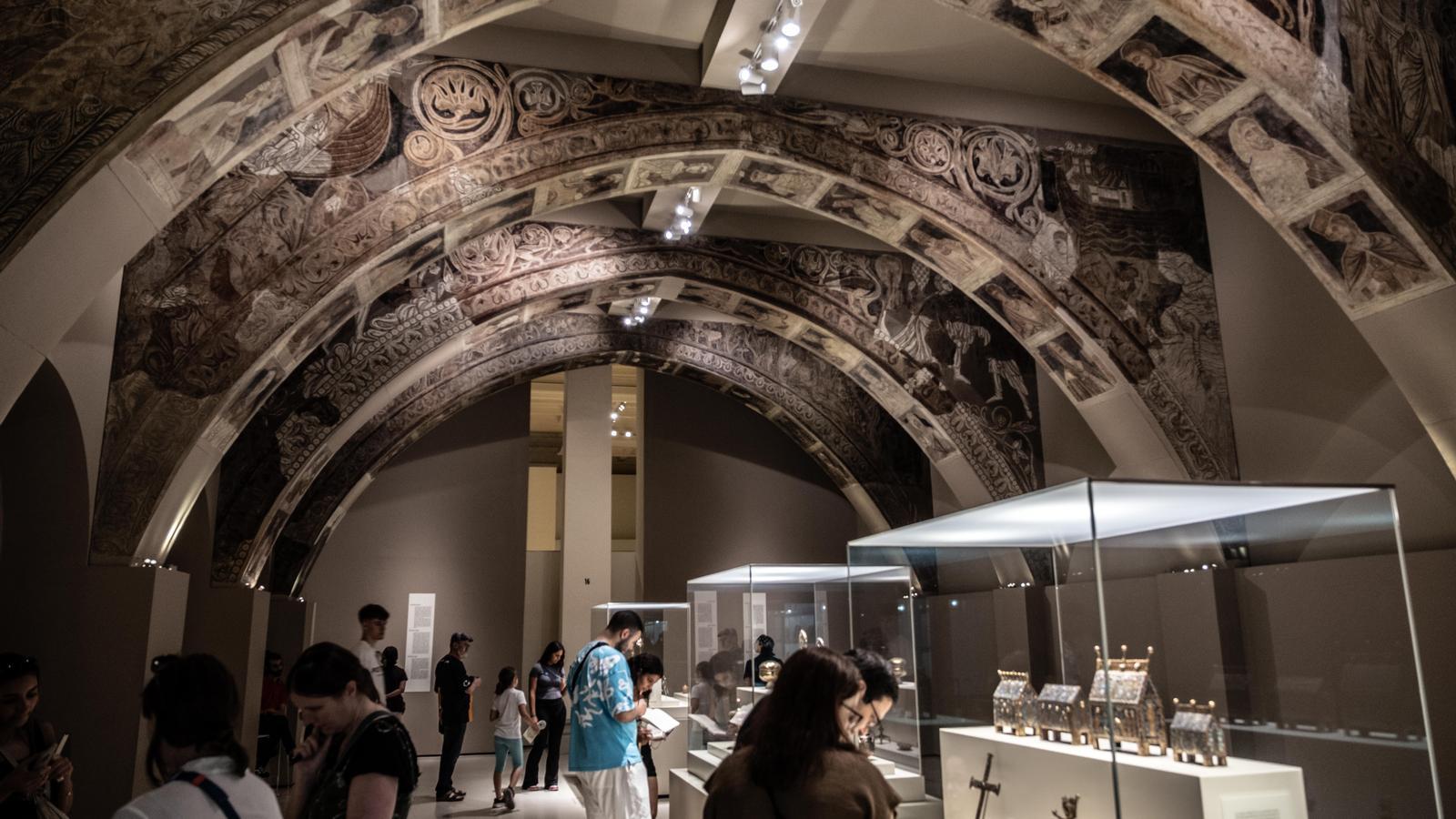New legal avenue for the Sijena murals to remain at the MNAC
Josep Costa files a request for a declaration of plunder of the paintings with the Directorate General of Heritage of the Ministry of Culture.


BarcelonaNew legal action to prevent the MNAC from having to transfer the murals from the chapter house of the Sijena monastery to Aragon: former vice-president of the Parliament, Josep Costa, registered on Monday. "a request for a declaration of plunder" of the paintings of Sijena to the General Directorate of Cultural Heritage and Fine Arts of the Ministry of Culture, according to what has been advanced The World and the ARA has been able to confirm. With this document, Costa opens a new "administrative route and, therefore, a judicial administrative dispute" so that the murals remain in the museum.
Costa's initiative is based on the case of the Cabanyal houses in Valencia, a part of the city's old town that about twenty years ago Mayor Rita Barberà wanted to demolish to extend Avenida Blasco Ibáñez to the sea. "The Valencian courts blessed it, but a citizen platform took it to the Ministry of Culture, which didn't dare intervene. The courts ruled in favor of the platform and, finally, declared that the urban plan was plunder and halted it," Costa explains to the ARA.
In his letter, Costa demands "a formal declaration, for the purposes of Article 4 of the Historical Heritage Law and as a matter of urgency, that the transfer of the mural paintings from the chapter house of the Sijena Monastery, preserved at the MNAC, constitutes the plundering of this asset." This declaration is based on "the real, objective, imminent and verifiable danger of destruction or irreversible deterioration that the execution of their transfer would entail," according to the statement. the numerous reports commissioned by the museum's management.
Since the Supreme Court ratified the sentence In response to the ruling by which the museum must return the murals, statements by the Minister of Culture, Ernest Urtasun, have been in line with the request to return the paintings. The ministry is part of the consortium of institutions that governs the museum, and some of its technicians are part of the working group formed to study the transfer of the paintings. Judge Rocío Pilar Vargas, of the Court of First Instance and Investigation No. 2 of Huesca, has given the MNAC seven months, still ongoing, to transfer the paintings.
Costa, who is currently a lawyer for the Santa Coloma de Gramanet City Council and a law professor at UPF, demands that the Spanish Cultural Heritage Institute (IPCE) issue "a report warning of the risk of destruction of the paintings if they are subject to transfer." "It is the public entity charged with ensuring the conservation of assets of cultural and heritage interest of the State and the only one that could make the judge in Huesca reconsider how to comply with the ruling," he emphasizes.
Force the Ministry of Culture to act
Costa's letter also demands that Article 6 of the Historical Heritage Law be applied, which obliges the Ministry of Culture to act. According to this premise, the State should immediately request "the government of Aragon, as the authority promoting the transfer and therefore the risk of destruction, and the Generalitat of Catalonia, under whose jurisdiction the paintings are currently located, to refrain from promoting, authorizing, or executing any action to transfer them." This abstention should be maintained "until they have reliably proven, through independent technical reports endorsed by experts in the field, the optimal and guaranteed conditions for their physical, environmental, museological, and scientific preservation in any location."
To prevent the murals from suffering any damage, Costa finally demands that the ministry adopt "the necessary provisional measures to safeguard the integrity of the mural paintings" and, therefore, "suspend any action that may pose a risk to the works," which would remain under the "provisional guardianship" of the ministry.
